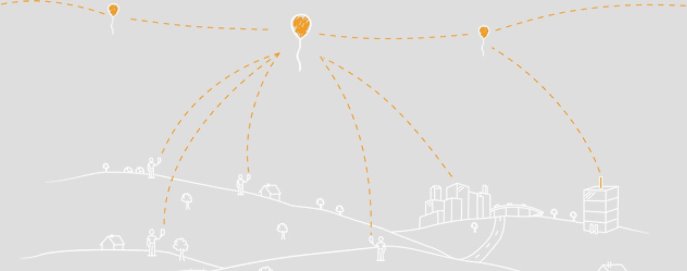by Rafi Schwartz .
The island nation of Sri Lanka has just signed a major contract to become the first country on earth to enjoy complete, nationwide 3G internet coverage, and they’re doing it all with balloons. Yes, balloons. Specifically, 13 of them, floating high above the Indian Ocean, bobbing in the stratosphere, to ensure the entire country of over 21 million people can get online.
Sri Lanka’s newfound connectivity is thanks to “Project Loon,” a silly-sounding, serious-impact initiative from Google designed to bring internet services to rural or remote locations for which standard internet installation is too difficult. To do so, Project Loon utilizes high tech balloons hovering twice as high as commercial airline routes, where they broadcast a 3G or LTE network, like that which most smartphones use for their internet connection, back down to earth. This short video from Project Loon explains the technology and process involved in making the balloon-based internet a reality:

While Project Loon itself is several years old, having been first tested in New Zealand back in 2013, Google’s agreement with Sri Lanka marks the first wide-scale application of the system, and vaults the small South Asian nation into the internet history books as a result. The Sri Lankan internet-balloons are slated to launch in the coming months. Once that happens, local internet service providers will be able to buy access to the Loon network, through which they can then connect their subscribers. Said Mangala Samaraweera, Sri Lanka’s Foreign, Telecommunications, and IT Minister, during the agreement signing ceremony: “As a result of this agreement, the entire Sri Lankan island – every village from Dondra to Point Pedro – will be covered with affordable high speed internet using Google Loon’s balloon technology.”
This is not the only “first” for that country, as far as communications technology goes. India Times points out that Sri Lanka became the first South Asian nation to release mobile phones in 1989, as well as the first to establish a 3G network in 2004.
